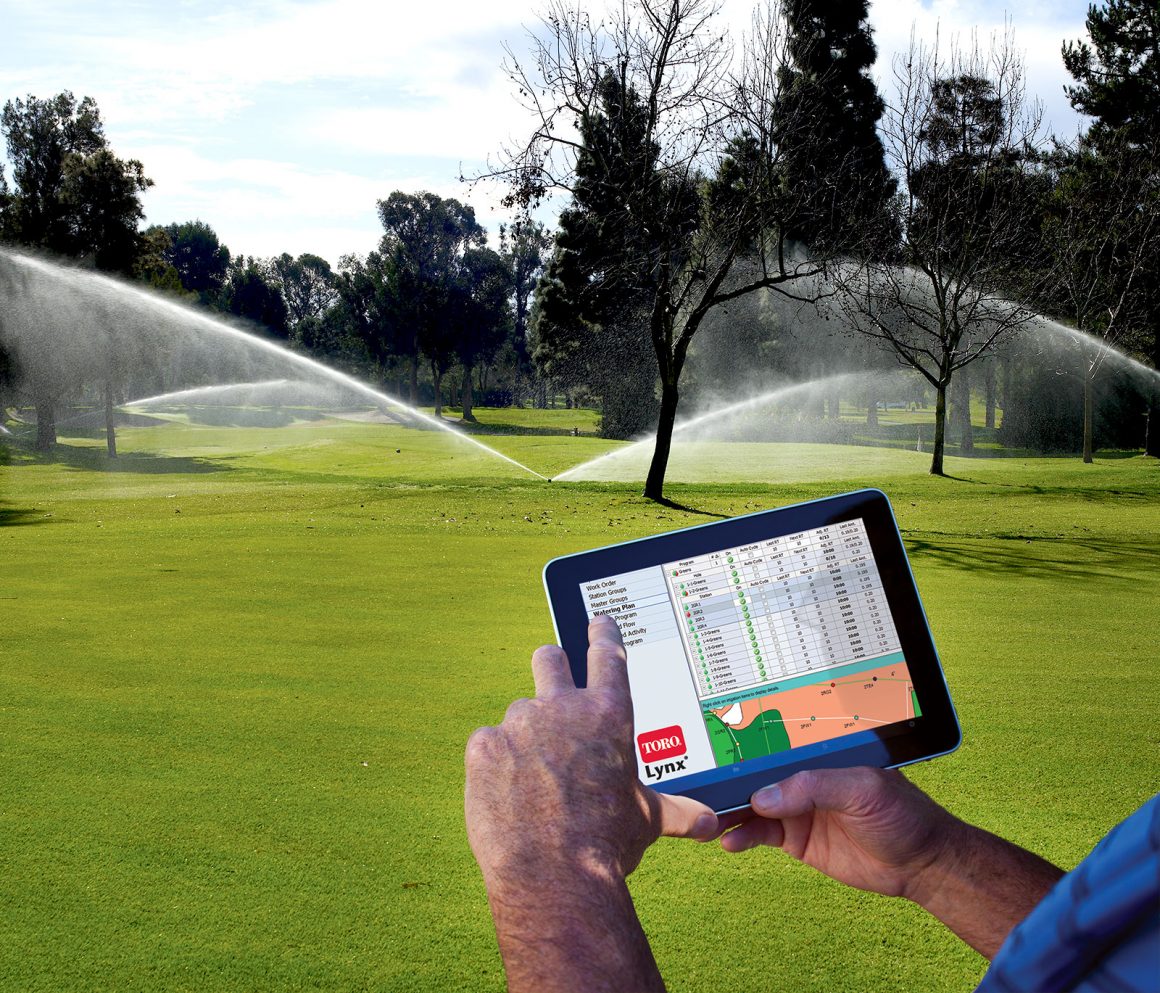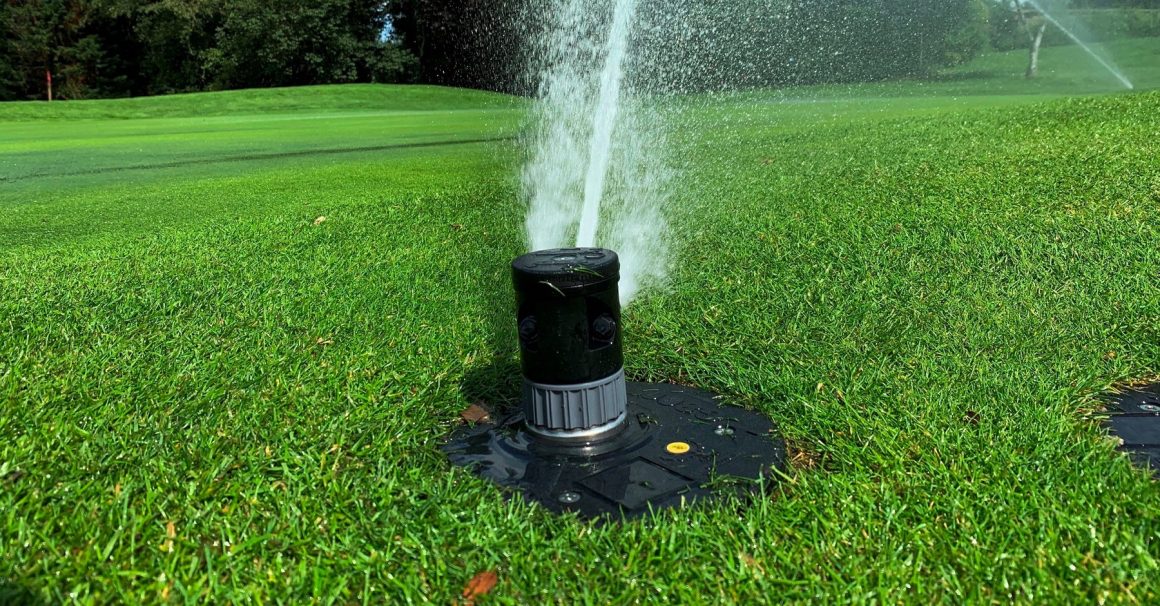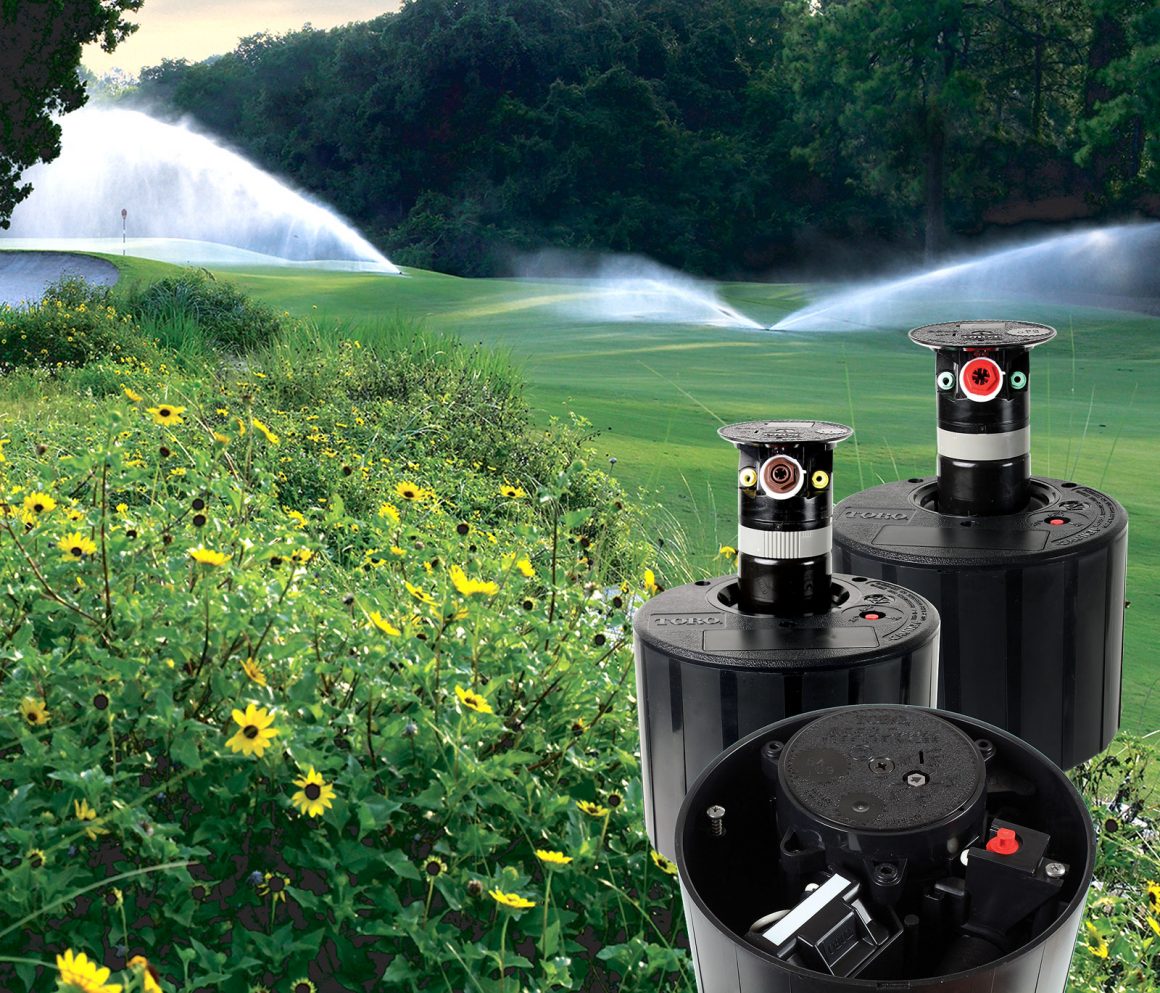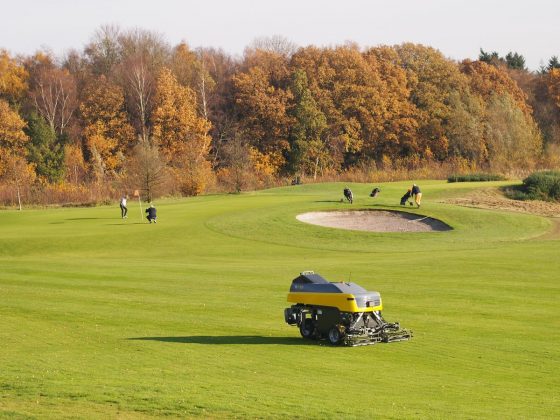Water makes up approximately 80-85% of the grass on the green of a golf course. This means that it’s especially important to make sure the greens are properly watered regularly.
In fact, almost all greens and tees are irrigated or have an irrigation system installed. Great golf courses will even have the fairway and rough areas irrigated, too.
Here, you’ll find a practical guide to an average golf course irrigation system, including the types of irrigation, what makes up an irrigation system, and much, much more. So, let’s get started!

The Types of Irrigation
Irrigation systems come in a variety of shapes and sizes, or so the saying goes.
You can purchase one for your golf course and choose from the following:
- Automatic irrigation system with central control
- Automatic irrigation system with stand-alone control
- Non-automatic irrigation system with stand-alone control
- Manually operated irrigation system

What Makes Up An Irrigation System?
An efficient irrigation system must include a variety of aspects, with the most important one being the source to get water.
You’ll also need a station for pumping, water distribution pumps with valves, valves that are controllable, control lines and controllers to go with them, and sprinkler heads.
Is Irrigation Important?
Irrigation systems are essential for golf courses, mainly because proper water mechanics will ensure that the grass stays healthy.
However, too much or too little water (operation of the irrigation system) can cause a problem, depending on whether the grass becomes too dry or too soggy. Algae, diseases, and life/death instances can also occur if irrigation is not properly followed.

What Can You Use For A Water Source?
Water sources range from a lake or a pond to a drainage system or an underground well.
The water source needs to be determined before the architect and designers start to actually build the golf course so that everything can be put into play accordingly.
What Is An Automatic Irrigation System?
An automatic irrigation system requires fixed sprinklers to be automatically activated through the valves. Now, this can be automatic from start to finish, or it can be manually operated in the beginning or manually operated in the end, with automatic timers set in between.

To Operate:
To operate an irrigation system, you’ll need to know what is too much or too little. That means you need to monitor things like soil moisture levels, temperature, humidity, wind conditions, upcoming rainfall, and other relevant weather conditions to properly determine the amount of water the grass is going to need in the next few days.
It’s best to irrigate early in the morning, as distribution disturbances and inconvenient watering times for golfers will not get in the way.









